Israel Flag Meaning
A white field with two horizontal blue stripes near the top and bottom edges and a blue Star of David (Magen David) in the center, based on the design of the traditional Jewish prayer shawl (tallit) and representing Jewish heritage and the modern State of Israel.
- Continent
- Asia
- Adopted
- 1948
- Ratio
- 8:11
- Colors
- blue, white
- Designer
- David Wolffsohn (based on traditional tallit design)
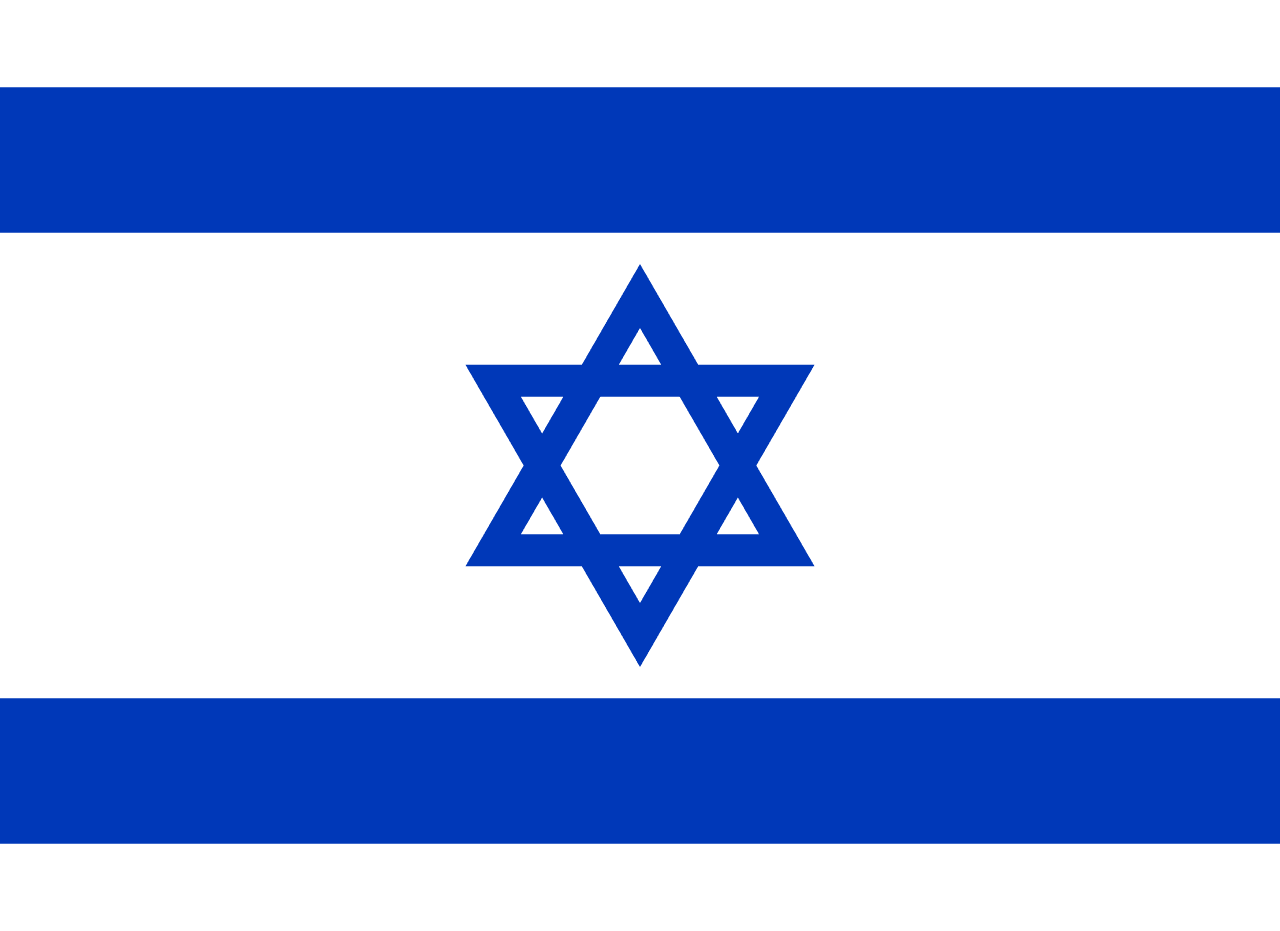
Symbolism
White Field: Represents purity, peace, and the traditional white background of the tallit (Jewish prayer shawl), symbolizing the spiritual foundation of Jewish life and Israel's aspiration for peace in the region.
Blue Stripes: Represent the blue stripes (called 'tzitzit') found on the traditional tallit worn during Jewish prayer, symbolizing the connection between the modern state and ancient Jewish religious traditions.
Star of David (Magen David): The six-pointed star represents Judaism and Jewish identity, symbolizing the shield of King David and serving as the central emblem of Jewish faith, culture, and the connection between the Jewish people and their ancestral homeland.
History
- 1891: David Wolffsohn designed the flag for the Zionist movement, basing it on the tallit worn by Jews during prayer, establishing the symbolic connection between Jewish religious tradition and national aspirations.
- 1897: The flag was displayed at the First Zionist Congress in Basel, Switzerland, where Theodor Herzl and other leaders discussed the establishment of a Jewish homeland.
- 1917: The Balfour Declaration expressed British support for a Jewish homeland in Palestine, giving new significance to Zionist symbols including the blue and white flag.
- 1920-1948: During the British Mandate period, the flag served as an unofficial symbol of the Jewish community in Palestine (Yishuv) and the growing Zionist movement.
- May 14, 1948: Israel declared independence, and the Provisional State Council officially adopted the flag as the national flag of the newly established State of Israel.
- 1948-1949: The flag flew during the Israeli War of Independence, representing the new state's struggle for survival against attacking Arab armies.
- 1967: During the Six-Day War, Israeli forces captured Jerusalem's Old City, and the flag was raised at the Western Wall, symbolizing the return to Judaism's holiest site.
- 1979-Present: The flag has represented Israel through peace treaties with Egypt (1979) and Jordan (1994), ongoing conflicts, and its development into a modern democratic state.
Trivia
- Israel's flag is one of only two national flags featuring the Star of David, making it instantly recognizable as a Jewish symbol worldwide.
- The flag's design predates the state by 57 years, originally created for the Zionist movement in 1891 by David Wolffsohn.
- The blue color is specifically 'tekhelet blue,' a color mentioned in the Torah and traditionally used in Jewish religious items.
- Israel is the only country where Hebrew is an official language, and the flag represents the revival of this ancient language for modern use.
- The flag flies over a country smaller than New Jersey but with an outsized impact on technology, with Tel Aviv being known as a major tech hub.
- Israel has more museums per capita than any other country, with the flag representing a nation deeply connected to preserving history and culture.
- The flag represents the only democracy in the Middle East, with a parliamentary system and independent judiciary despite regional challenges.
- Israel has won the Eurovision Song Contest four times, with the flag prominently displayed during these cultural celebrations.
- The flag flies over a country that has absorbed immigrants from over 100 countries, creating one of the world's most diverse societies.
- Israel's Declaration of Independence was signed in what is now Independence Hall in Tel Aviv, where a large flag was displayed during the ceremony.
- The flag represents a country that has produced numerous Nobel Prize winners despite having a population of only about 9 million people.
- Israel is the only country where the majority of the population is Jewish, making the flag's Jewish symbolism nationally representative.
- The Dead Sea, the lowest point on Earth, lies partially within Israel's borders, though this geographic feature isn't represented on the flag.
- Israel's flag appears on products from its thriving high-tech industry, including cybersecurity, medical devices, and agricultural innovations.
- The flag flies over a country that has made the desert bloom through advanced irrigation and agricultural techniques, fulfilling Zionist dreams of land reclamation.
Related Countries
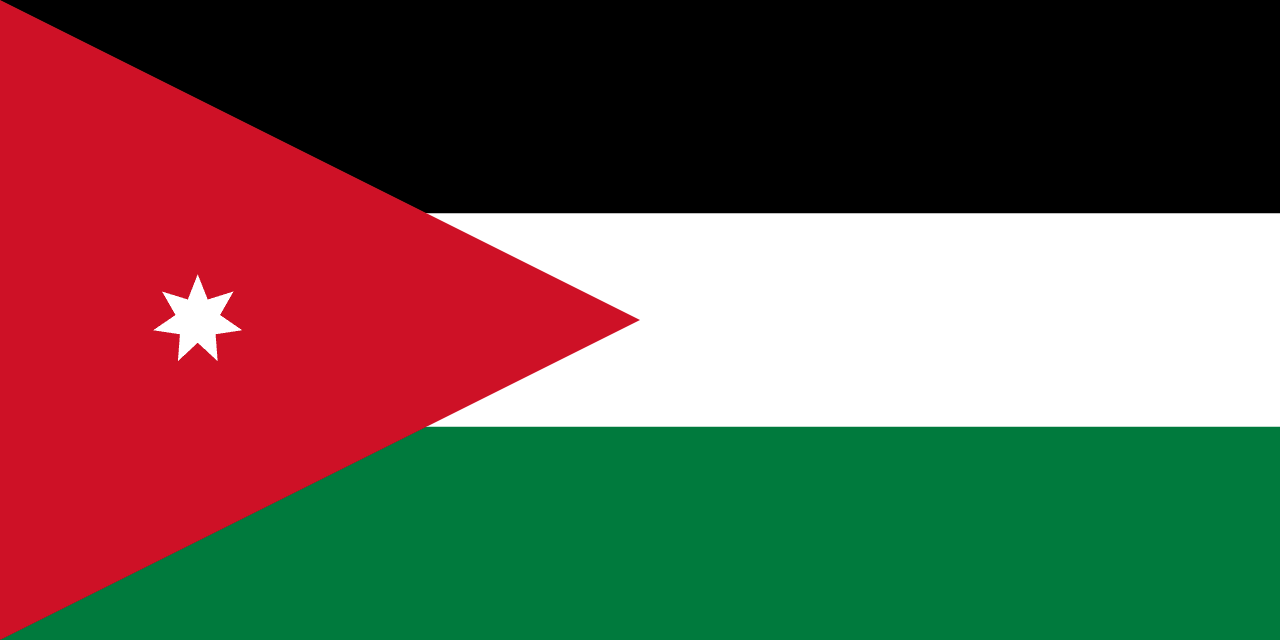
Jordan
Asia
Three horizontal stripes of black, white, and green with a red triangle on the hoist side containing a seven-pointed white star, representing the Arab Revolt heritage and the Hashemite Kingdom's role as guardian of Islamic holy sites.
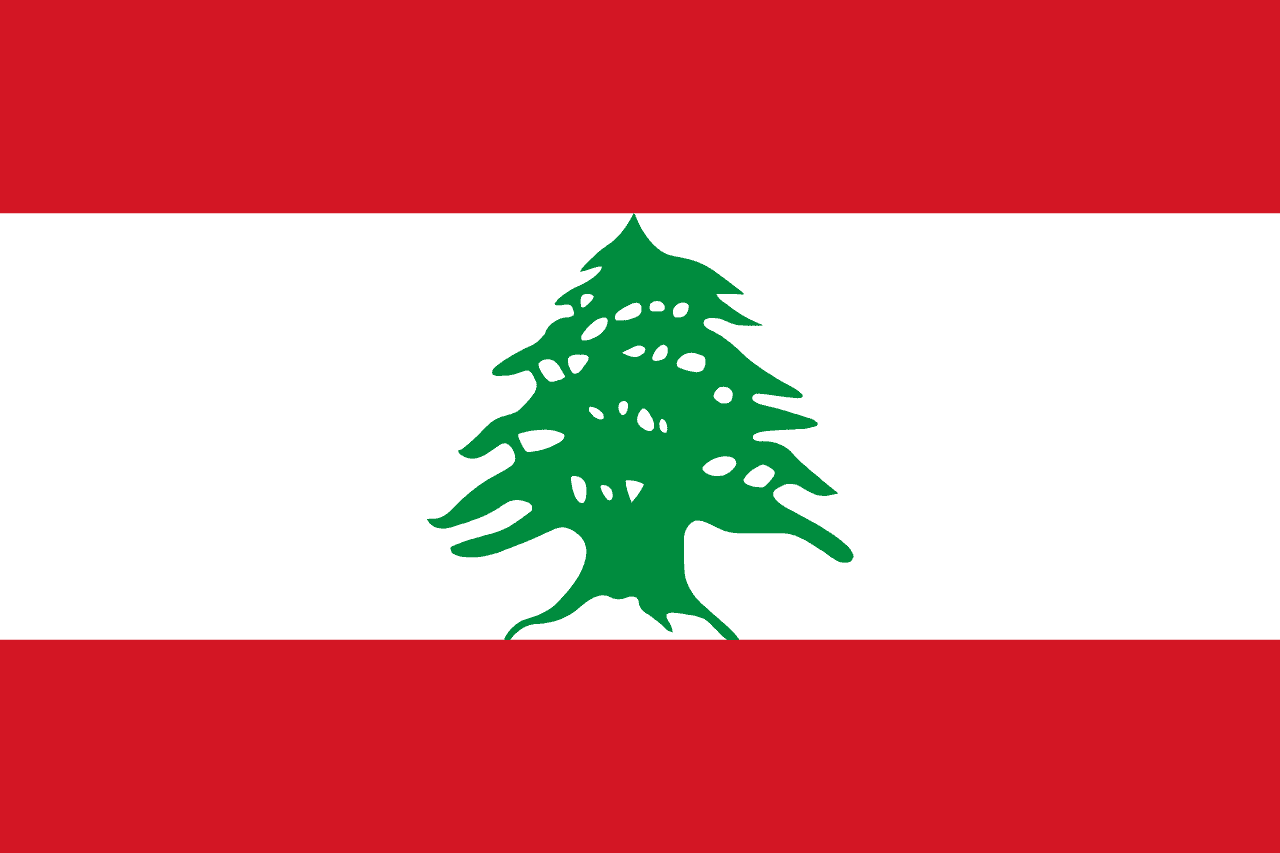
Lebanon
Asia
Two horizontal red stripes separated by a white stripe twice their width, with a green cedar tree centered on the white stripe, representing the strength, purity, and eternal heritage of the 'Land of the Cedars.'

Cyprus
Europe
A white field with a copper-colored silhouette of the island of Cyprus and two green olive branches below, representing peace, the island's geographic identity, and its ancient association with copper mining and olive cultivation.
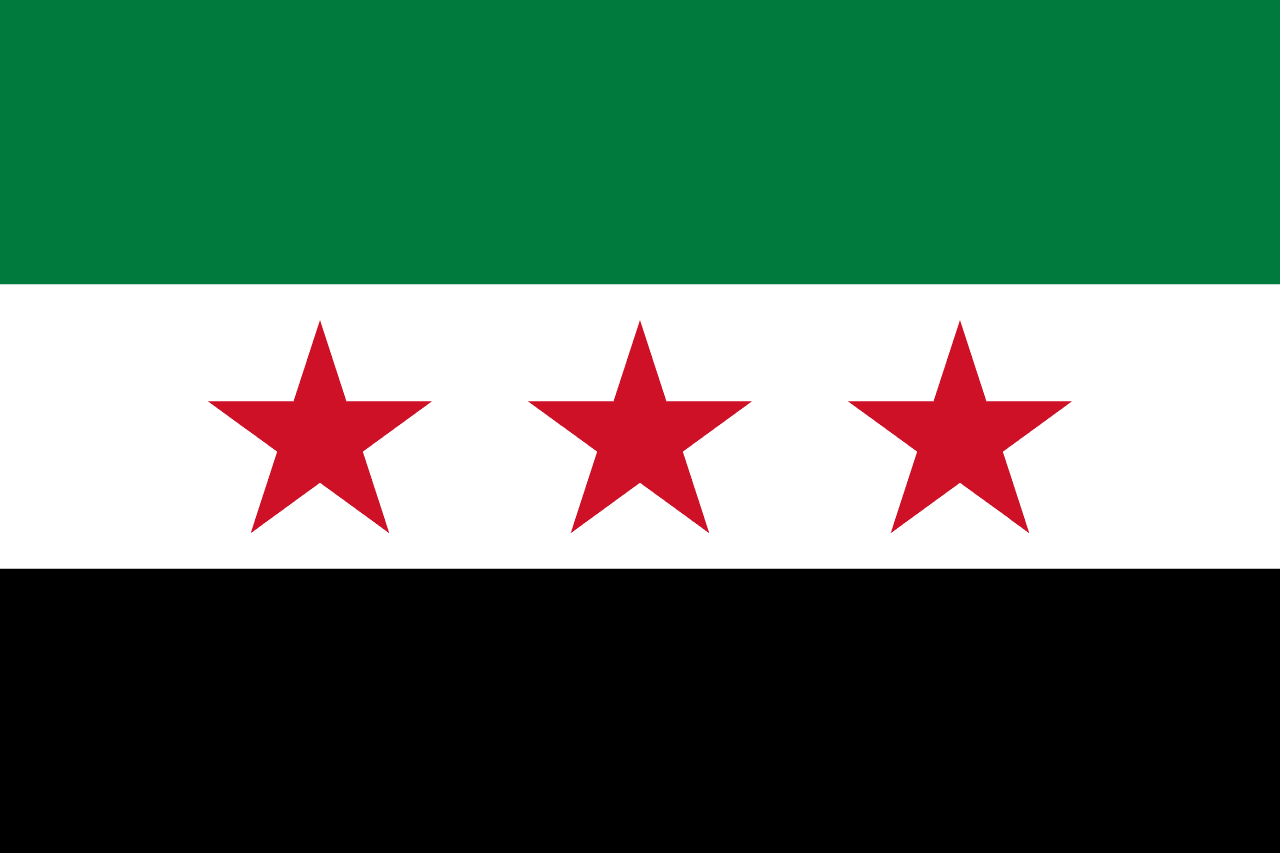
Syria
Asia
Three horizontal stripes of red, white, and black with two green five-pointed stars on the white stripe, representing the Pan-Arab colors of liberation struggles, the Hashemite flag heritage, and the Ba'ath Party's Arab socialist ideology that has governed Syria since 1963.

Egypt
Africa
Three horizontal stripes of red, white, and black with the golden Eagle of Saladin centered on the white stripe, representing the struggle for freedom, purity and bright future, the dark past of oppression, and the strength of the Arab Republic of Egypt.
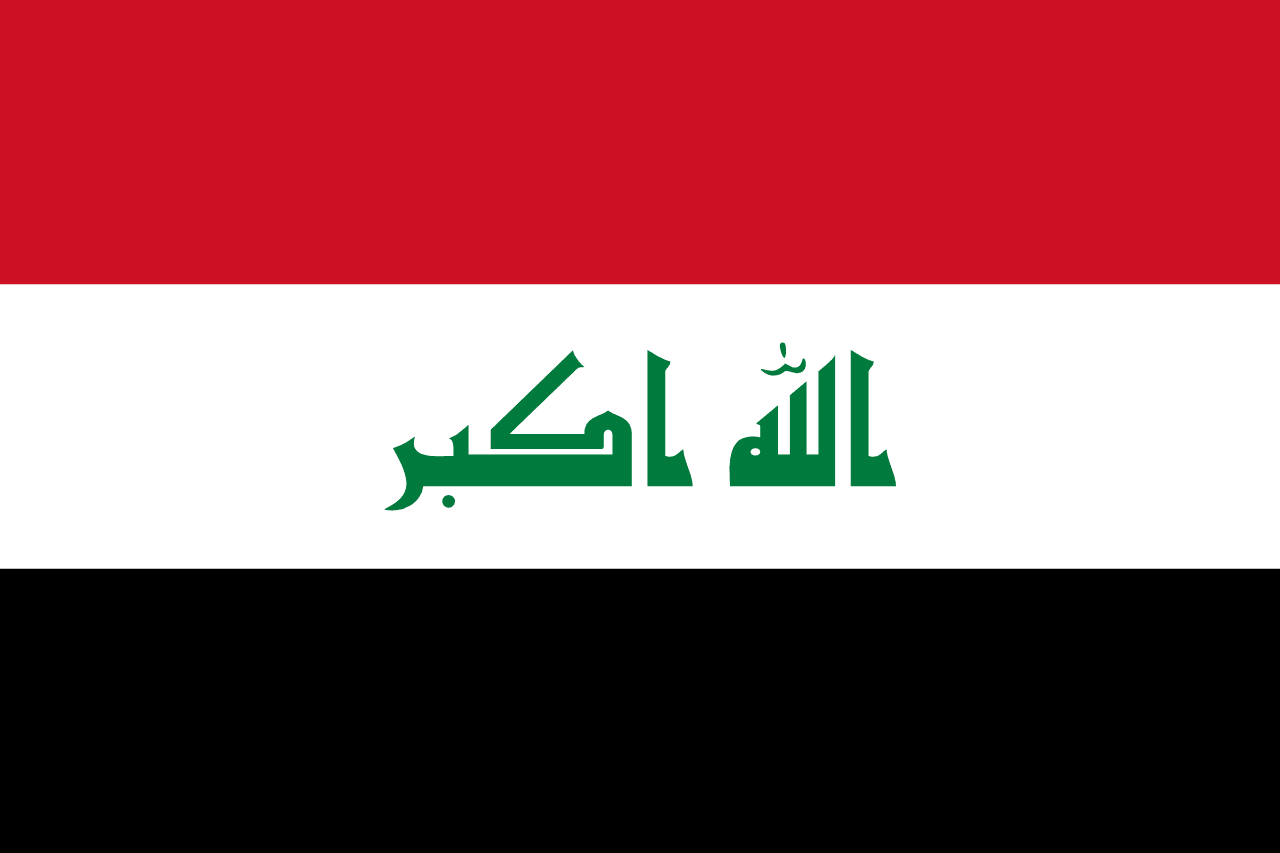
Iraq
Asia
Three horizontal stripes of red, white, and black (Pan-Arab colors) with 'Allahu Akbar' (God is Greatest) written in green Arabic Kufic script across the white stripe, representing Arab unity, Islamic faith, and Iraqi sovereignty.